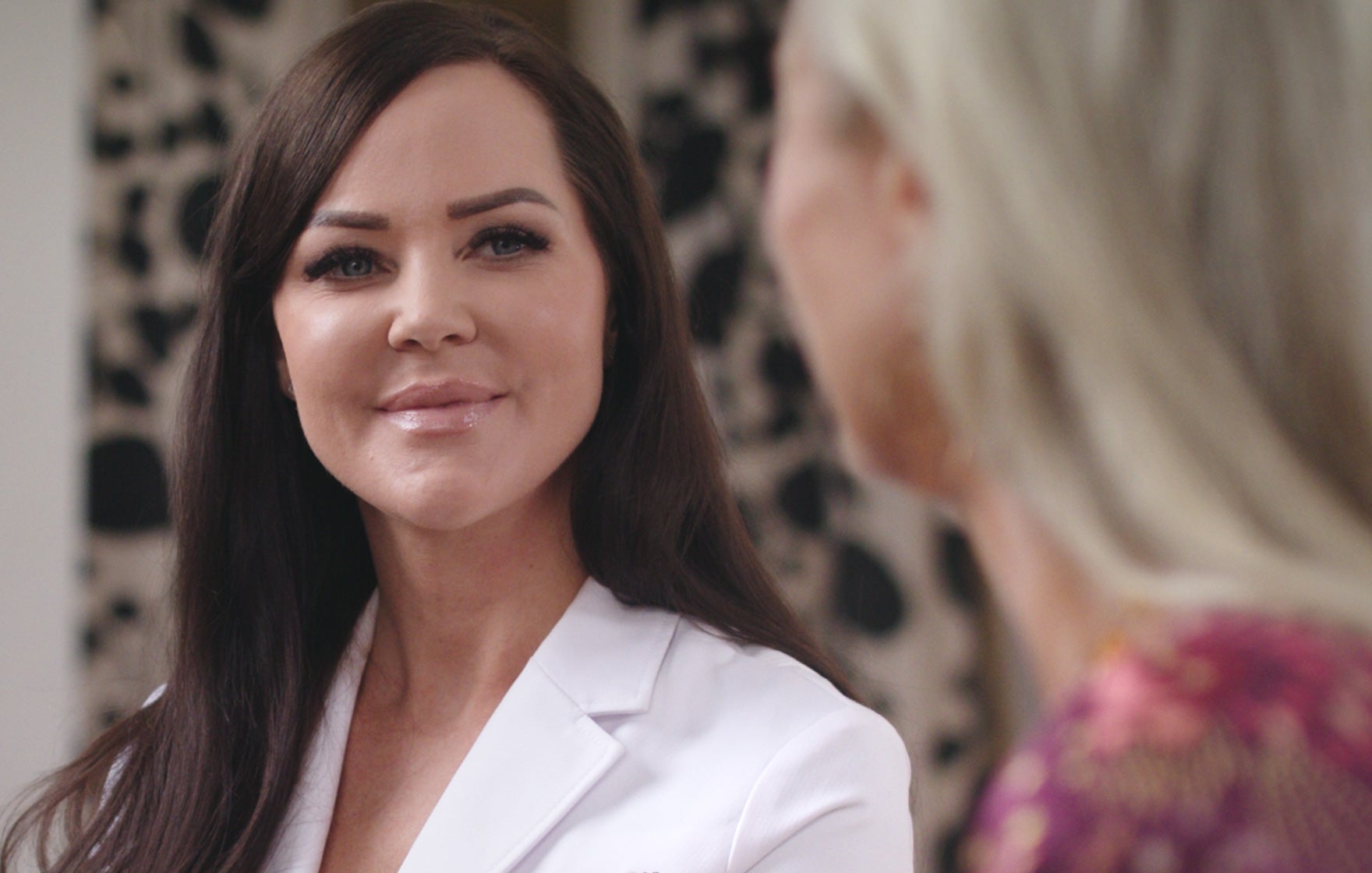Discuss the possibilities of an individualized treatment
approach with a licensed professional.


Lip fillers
Lip fillers based on hyaluronic acid have become a popular way to enhance our appearance.1 If you want a natural look and feel to your lips, Restylane® KYSSE™ is clinically proven to provide just that—and even more kissability.2 It’s the no.1 injectors’ choice for lips.3
What are lip fillers from
Restylane® and what do they do?
Whether your lips are naturally thin or have lost definition over time, the lip filler from
Restylane® plump, smooth and enhance in one quick treatment.2 Correct asymmetry, add volume or create a smooth sensuous feel? You can have all of it with Restylane® KYSSE™.2*
Take a look at the possibilities.
A lip filler for all purposes

Restylane® KYSSE™
FOR NATURAL-LOOKING, KISSABLE LIPS
Restylane® KYSSE™ is a lip filler specifically designed for the lips. It creates natural-looking and natural-feeling, soft, plump lips, with less filler needed for optimal lip fullness.1,2,4,5** The soft and flexible filler gel makes the lips even more kissable—according to both those treated and their partners.2,4,7-10
Enhance your natural beauty with long-lasting kissable lips for up to 12 months.2,4 People treated with Restylane® KYSSE™ report that they are very satisfied with the natural look and feel.2*

were happy with the style of their lips2*
were satisfied with the kissability of their lips2*


Frequently asked questions
How long do lip fillers last?
It differs from filler to filler and person to person, but usually for a few months. When you choose Restylane® KYSSE™ you will have a long-lasting lip filler that creates a natural appearance and feel, fullness and softness for up to 12 months.2,4
Will lip fillers hurt?
Some people may experience mild discomfort. Restylane® KYSSE™ contains an integrated local anesthetic, lidocaine, to provide you with a more comfortable treatment experience.10 You and your healthcare practitioner may decide whether additional pain relief is needed.
Lip fillers aftercare - what should I do?
After treatment, you will receive specific lip fillers aftercare instructions from your healthcare practitioner. A general advice is to avoid makeup for 24 hours. Your healthcare practitioner will inform you about specific lip fillers aftercare in your case and about potential side effects of the treatment.
* As assessed by the Galderma KISSABILITY Questionnaire, which was provided at Week 4 and returned at Week 8.
** A significantly smaller volume of Restylane® Kysse™ was required to achieve comparable lip fullness vs. Juvéderm Volbella (1.82 mL vs. 2.24 mL; p<0.001).5
1. Bertucci, V et al. J Drugs Dermatol 2021; 20(4): 402–408. 2. Bertucci V et al. J Cosmet Dermatol 2021; 20(5): 1499–1504. 3. Global Restylane and Hero SKU HCP perception Survey, Global Derm Pulse - 2024-08-27, InCrowd. 4. Hilton S et al. Dermatol Surg. 2018;44(2):261–9. 5. Weiss R et al. Dermatol Surg. 2021;47(4):527–32. 6. Nikolis A et al. Dermatol Surg. 2021;47 (5):e168–73. 7. Lundgren B et al. J Drugs Dermatol. 2018;17:982–6. 8. Nikolis A., Bertucci V., Solish N.; Post-marketing study to evaluate lip enhancement, naturalness and both partner and subject satisfaction after treatment with HARK; Poster presented at IMCAS, France, Feb 2020. 9. Data on file (MA-39680). 10.Restylane® KYSSE™ IFU (EU).
Always consult a healthcare professional for individualized treatment recommendations and to discuss important safety information and risks associated with the use of the products.














